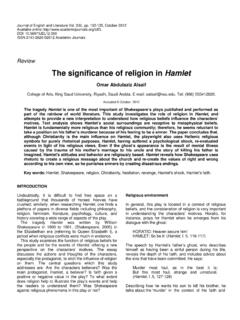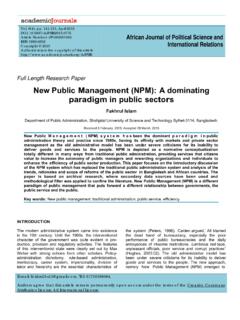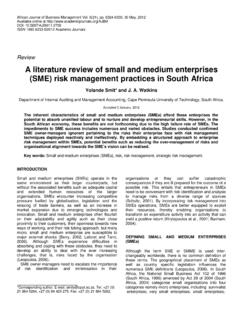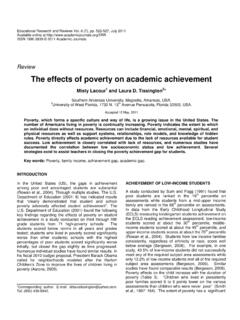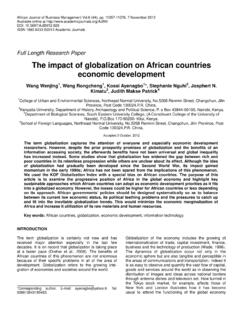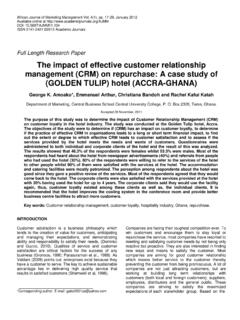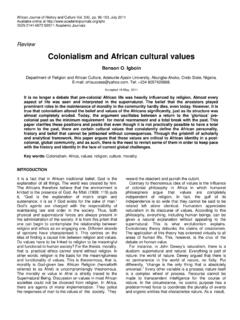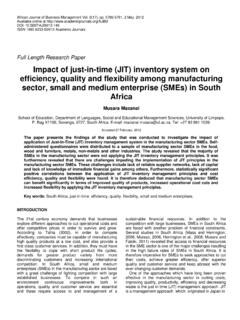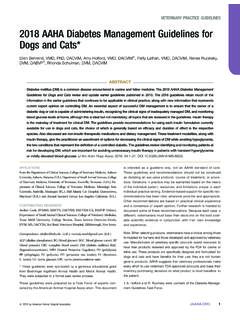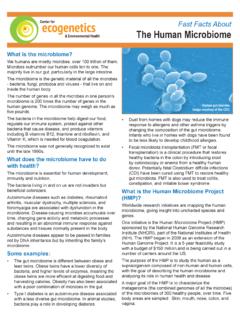Transcription of Diabetes mellitus - Academic Journals
1 Scientific Research and Essay Vol. 4 (5) pp. 367-373, May, 2009 Available online at ISSN 1992-2248 2009 Academic Journals Review Diabetes mellitus Samreen Riaz Department of Microbiology and Molecular Genetics, Punjab University, New Campus, Lahore. Pakistan. E-mail: Accepted 16 April, 2009 Diabetes is a life-long disease marked by elevated levels of sugar in the blood. It is the second leading cause of blindness and renal disease worldwide. Diabetes mellitus is a chronic disease caused by inherited and/or acquired deficiency in production of insulin by the pancreas, or by ineffectiveness of the insulin produced. It is a silent killer disease and affects millions of peoples in the world.
2 This article focuses on the causes, types, factors affecting DM, incidences, preventive measures and treatment of the acute and chronic complications of Diabetes other than those directly associated with hypoglycemia and severe metabolic disturbances. Key word: Diabetes mellitus , types, symptoms, causes, treatments. INTRODUCTION Diabetes mellitus is a disorder that affects the body s ability to make or use insulin. Insulin is a hormone pro-duced in the pancreas that helps transport glucose (blood sugar) from the bloodstream into the cells so they can break it down and use it for fuel. People cannot live without insulin (ADA, 2007).
3 Diabetes results in abnormal levels of glucose in the bloodstream. This can cause severe short-term and long-term consequences ranging from brain damage to ampu-tations and heart disease (ADA, 2007). Root causes of Diabetes mellitus (DM) The root causes of Diabetes are complex. Most cases begin with one of two processes: Metabolic: Unhealthy lifestyle factors such as over-eating, physical inactivity and obesity can impair the body s ability to use insulin. This is called insulin resis-tance. Uncontrollable risk factors including genetics, fa-mily history and age can also be involved. Metabolic forms of Diabetes include: Type 2 Diabetes : This accounts for 90 - 95% of diabetic cases, according to the National Institutes of Health (NIH).
4 Some of these patients have had prediabetes that went uncontrolled. Once considered a disease of middle and old age, type 2 is also becoming more common in youths as the incidence of childhood obesity grows. Gestational Diabetes : Hormonal changes contribute to this condition which can develop in any previously non-diabetic woman during pregnancy, especially those who are overweight. AUTOIMMUNE The body s immune system can mistakenly destroy the insulin-producing beta cells of the pancreas. The causes of autoimmune Diabetes are poorly understood, but genetics and family history play a role, and viruses or other environmental factors are believed to figure in.
5 Autoimmune forms of Diabetes include: Type 1 Diabetes : Formerly known as juvenile Diabetes , this form generally develops in children and young adults. Latent autoimmune Diabetes of adulthood: This varia-tion of type 1 can occur later in life. Individuals with auto-immune Diabetes who overeat, are sedentary, gain weight or have certain genes can, like people with meta-bolic forms of Diabetes , develop insulin resistance. This state is known as double Diabetes . Diabetes can also result from another disease, such as pancreatitis, or even from a medical treatment, including pancreatectomy (surgical removal of the pancreas) or cer- tain medications.
6 This is known as secondary Diabetes . In addition, there are uncommon inherited disorders that cause Diabetes , such as maturity-onset Diabetes of the young and Wolfram syndrome. Most cases of Diabetes 368 Sci. Res. Essays last the rest of a person s life. However, gestational dia-betes generally ends when the pregnancy does, and some cases of secondary Diabetes are also temporary (Cefalu et al., 2007). Factors contribute in DM Diabetes involves chronic levels of abnormally high glucose (hyperglycemia). Many patients, especially those with type 2 Diabetes , also have elevated blood pressure (hypertension), chronic high levels of insulin (hyperin-sulinemia) and unhealthy levels of cholesterol and other blood fats (hyperlipidemia).
7 All of these factors contribute to the long-term complications of Diabetes , which include: Vascular disease (diabetic angiopathy), atheroscle-rosis, heart conditions and stroke: These cardiovas-cular disorders are the leading cause of death in people with Diabetes . Kidney disease (diabetic nephropathy): Diabetes is the chief cause of end-stage renal disease, which req-uires treatment with dialysis or a kidney transplant. Eye diseases: These include diabetic retinopathy, glaucoma and cataracts. Diabetes is a leading cause of visual impairment and blindness. Nerve damage (diabetic neuropathy): This includes peripheral neuropathy, which often causes pain or numb-ness in the limbs, and autonomic neuropathy, which can impede digestion (gastroparesis) and contribute to sexual dysfunction and incontinence.
8 Neuropathy may also impair hearing and other senses. Impaired thinking: Many studies have linked Diabetes to increased risk of memory loss, dementia, Alzheimer s di-sease and other cognitive deficits. Recently some resear-chers have suggested that Alzheimer s disease might be type 3 Diabetes , involving insulin resistance in the brain. Infections and wounds: Foot conditions and skin dis-orders, such as ulcers, make Diabetes the leading cause of nontraumatic foot and leg amputations. People with Diabetes are also prone to infections including periodontal disease, thrush, urinary tract infections and yeast infec-tions. Cancer: Diabetes increases the risk of malignant tumors in the colon, pancreas, liver and several other organs.
9 Musculoskeletal disorders: Conditions ranging from gout to osteoporosis to restless legs syndrome to myo-fascial pain syndrome are more common in diabetic pat-ients than nondiabetics. Pregnancy complications: Diabetes increases the risk of preeclampsia, miscarriage, stillbirth and birth defects. Emotional difficulties: Many but not all of the studies exploring connections between Diabetes and mental illness have found increased rates of depression, anxiety and other psychological disorders in diabetic patients. In addition to chronic hyperglycemia, diabetic patients can experience acute episodes of hyperglycemia as well as hypoglycemia (low glucose).
10 Severe cases can cause seizures, brain damage and a potentially fatal diabetic coma. Acute glucose emergencies include: Insulin shock: This advanced stage of hypoglycemia is typically due to excessive amounts of insulin medication or certain antidiabetic agents. Diabetic ketoacidosis: A lack of insulin can force the body to burn fats instead of glucose for energy. The result is a toxic byproduct called ketones, along with sev-ere hyperglycemia. Hyperosmolar hyperglycemic nonketotic state: This involves severe hyperglycemia and dehydration. These dangerous glucose complications are most comm-on in patients with unstable Diabetes , but they can deve-lop even in individuals who do not realize they have Diabetes .
